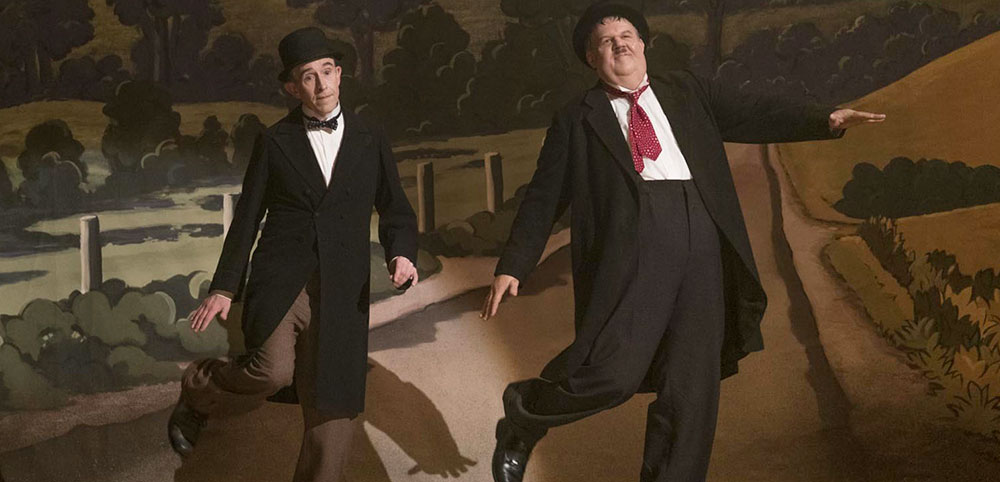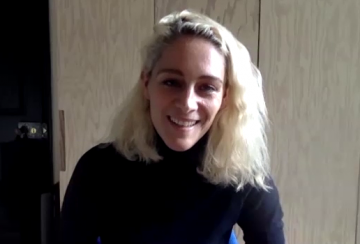STAN & OLLIE
Funny drama
Film. More than sixty years after the last show of Laurel and Hardy, this moving biopic celebrates their genius and humanity. John C. Reilly and Steve Coogan in a state of grace.
By Michaël Patin

Laurel and Hardy are at the height of their glory. On the set of Way Out West, the little (Stan), tries to convince the big (Oliver, aka Ollie, aka Babe) to leave the star-producer Hal Roach to go on their own. In front of his friend’s reluctance and Roach’s intransigence, Stan slams the door of the studio. Flash forward : 1953. The Golden Age is over. To raise funds for a film about Robin Hood, the duo go on tour in England, where they triumphed a few years earlier. But the reception has changed, the standard of hotels dropped and the first rooms are almost empty …,”I thought you were retired,” throws a lady.
”The film's main argument : the alchemy between John C. Reilly and Steve Coogan
The success of a biopic is often measured by what one chooses not to say and not to show. By focusing on a belated and little-known episode of their long career, Jon S. Baird (director) and Jeff Pope (screenwriter) trust the intelligence and memory of the viewer (everyone has a picture of Laurel and Hardy in mind) and avoid the recurring pitfalls of the exercise. Stan & Ollie is neither hagiographic, exhaustive, nor revisionist, nor obsessed with documentary reliability. The choice of a narrow skylight, a tight space-time, allows them to deploy universal themes.
Laurèléardi
It will be about men who are aging behind their characters, fragile and painful mechanisms of creation, ambitions that are the symbol of neurosis (those of Laurel, the creative genius), the “joie de vivre” that is not eternal ( that of Hardy, pachydermic and cardiac), of this mixture of love and resentment that cements the old couples, the melancholy of the last rising curtains … Stan & Ollie aims the heart of this two-headed creature including a review of Cahiers du Cinéma, who had spelled the name “Laurèléardi”. An indivisible myth that belongs to all of us.
The director, a defector of television, respects the stylistic canons of Hollywood : clean and illustrative, not to say a little dusty. The “production value” (costumes, sets, camera movements) counts here at least as much as the intention of staged. But for once, it turned out to be the best : this efficiency was not only necessary to restore the irresistible mechanics of Laurel and Hardy’s sketchs, but it is also the sign of a welcomed modesty in front of authenticals and great characters.
The chimistry of Reilly Coogan
This is where the film’s main argument comes in : the alchemy between John C. Reilly and Steve Coogan. There was no doubt about Reilly’s ability (The Sisters Brothers, The Lobster, Step Brothers …) to reproduce the essence of the big Ollie, as charming and sensitive in the intimacy as his character was tyrannical on the screen. For Coogan (Philomena, A Very English Man …), it was another matter. The Englishman tends to always play (too much) himself, whatever the context is. His transformation into Laurel is all the more breathtaking : in the blink of an eye, without betraying the slightest effort, he slips from the man (intelligent, melancholic, of unlimited creativity) to his double of fiction (a cunning and whining mime). The great respect still enjoyed by Stan Laurel among British comedians had produced something good : Steve Coogan has found the role of his life.
“Seeing them is enought even if they do anything” said Pierre Etaix about Laurel and Hardy. Behind their simplicity, humans mechanisms and complex artistswere hiding, and this is what Stan & Ollie reveals with accuracy, despite the lack of virtuosity. “Another Fine Mess” where reality and legend are harmonizing, to give those emperors of laught what belongs to them.




